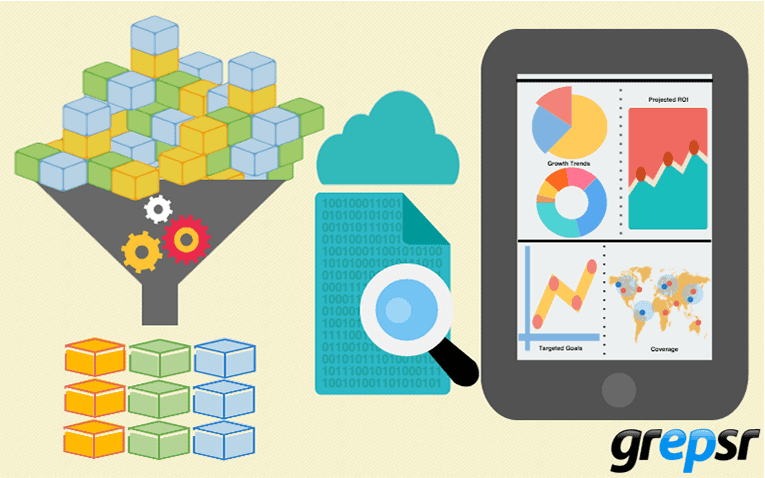Big Data isn’t just a big buzzword. Nor is it merely a business ritual. Ask yourself these 5 essential questions to know if you business is ready for data-driven transformation in the Big Data era

When it comes to making an effective deployment of data, what matters the most is having a well-rounded data deployment policy in place. A policy formulated taking all of the important elements or aspects of data life cycle management provides a guideline to establish a right mechanism, to take a right approach, and to come up with the right data for the right solutions.
Most importantly, data deployment is not a ‘stand alone’ process. Instead, it is a part and parcel of the efficient data management and productivity optimization policies.
Because every business enterprise has a unique set of approaches, goals, and priorities in terms of data deployment, there is no silver-bullet solution that applies to all business enterprises equally.
However, a standard enterprise data management commonly involves the process of defining the data requirements, extracting the required data, integrating the data into the BI systems for analysis and securely storing the data for the future references. Hence, the questions regarding Big Data deployment readiness revolve around these issues.
Here we’ve rounded up five of the key questions you would be better off asking yourself.
1. What specific business objectives do you envision to achieve with your data?

Considering the fact that different enterprises have different purposes of using data, to have a very precise and clear view about the business objectives is the most important part of your big data strategy.
Data yields no result unless it is applied to achieve the clearly specified business objectives taking the specific business contexts into account. For doing this, you have to be fully cognizant about the whats, whys, and hows—i.e. what your requirements and expectations are and how you are going to mobilize your resources to meet them—of data deployment.
2. Do you have the required data aggregation and integration skillsets and infrastructure?

Data aggregation and deployment involves a complex process of data extraction (collecting, cleansing, converting, formatting, validating), data integration (loading, linking, combining, applying), and data warehousing (classifying, archiving, storing, retrieving) which require a complex set of tools, infrastructure, and skilled workforce.
What if you are not able to invest thousands of extra dollars on setting up an advanced infrastructure and hiring data scientists you need? Certainly, not all businesses can afford doing so. Besides, having to process too much of unstructured data can even cause data overload and choke your system off. Even if you do not have the required skills or facilities for doing the job, you can still get the advantage by patterning with the data warehousing and BI platforms. Grepsr—a low-cost, cloud-based flexible service—for example, can be a good choice for your data aggregation needs.

3. Is your data fresh, relevant, consistent and accurate?

Freshness, relevancy, consistency and accuracy are the crucial benchmarks of high quality and actionable data. An old and irrelevant data can offer only a little (or no) business insights and can even cause more harm if applied in the inappropriate contexts.
By implementing the process of frequent updating, standardization, and validation, you can avoid the garbage in garbage out situation. Moreover, bugs in the data entry and processing systems or applications can cause inconsistency and inaccuracy in the data output. It is, therefore, imperative that you use the right tools to measure and maintain the quality of your data. By applying regression testing and frequent diagnostics, you can ensure that you won’t get faulty data or experience system crash in the future. Check out the best data enrichment tools available on the web here.
4. Is your decision-making process guided by the current Big Data best practices?

The whole purpose of using data is facilitating the decision makers take right decisions by providing them with the hard data and factual information. Cutting-edge technologies developed in the areas of data accumulation and integration have made the process of decision making a lot easier.
To ensure that you are not missing any of the key elements of Big Data best practices, you need to:
- Familiarize your staff with the basics of Big Data.
- Reorient your organization for moving towards data-driven mode.
- Create positions responsible for conducting data-related tasks.
- Apply the advanced data mining, migration, analytics, BI, visualization tools, cloud technology and other technologies that improve leanness and scalability.*
- Communicate about the findings in your organization’s decision making process.
- Implement the findings with a focus on performance optimization and service customization.
- Review the entire process for the necessary changes, corrections, or upgrades.
* Depending on the tools and skill-sets you have, you might also require an expert’s help in conducting some of these processes.
5. Do you work with a complete metadata management policy?

Because a good metadata management policy takes not only the state of the data but also the entire range of data management approaches and mechanisms into account, it helps businesses develop a comprehensive understanding about and maintain the detailed catalogs of data lifecycle management.
With this road-map at hand, businesses can have clear plans and prior readiness for the important issues like:
- Where to get the data from
- How to maintain a better data quality environment
- What tools or procedures to adopt for optimizing agility and productivity
- How to mitigate the risks of data being leaked, stolen or damaged
- How to encrypt, archive and store the data securely, and how to make it accessible and retrievable when needed
Your Readiness Counts
For many businesses today, adopting the right data management policies is a huge challenge. Big data offers them a make-or-break challenge as well as an opportunity. While the correct data deployment initiative adds to an improved competitive edge, a few of the missteps in it can lead to a huge catastrophe.
Likewise, a few of the good policies can save data from being junk records, and turn it into a goldmine of information, giving your organization a greater competitive advantage over your competitors.
So, are you fully prepared to embrace data-driven transformation for your journey into the Big Data era?

Related read:









































